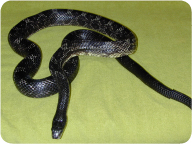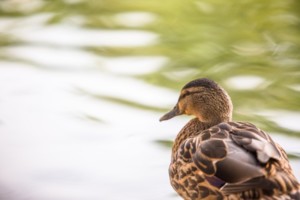 Black Rat Snake
Black Rat Snake
Pantherophis obsoletus obsoletus
Description
The Black Rat Snake is black or dark brown with traces of white between the scales.
Size
This snake can grow up to seven feet in length and weighs an average of 2.5 pounds.
Adaptations
- The Black Rat Snake is a constrictor, meaning that it kills its prey by suffocation. This normally docile snake is non-venomous, but when alarmed, it will vibrate its tail rapidly in leaves to simulate the sound of the venomous rattlesnake. If it is picked up, it can produce a foul-smelling musk to release upon the attacker.
Diet
The Black Rat Snake’s prey consists of mice, rats, chipmunks, birds, and bird eggs. The Black Rat Snake at Cosley Zoo eats mice and chicks and is fed once a week, on Sundays.
Reproduction
Black Rat Snakes mate between April and June. In late June or July, the female buries 5 to 30 eggs in a rotten log, decaying leaf litter or under rocks. The leathery-shelled eggs are white, oblong and about 1.5 to 2 inches long. The eggs hatch in 7 to 15 weeks. The young snakes are on their own and require no parental care.
Shelter and Space Needs
The Black Rat Snake is primarily a forest animal, but it may wander into a variety of other habitats such as swamp borders, river flood plains, abandoned sawdust piles, rocky hillsides, mountain ledges, farm buildings, and abandoned dwellings. It can also climb trees and many Black Rat Snakes inhabit them.
Life Expectancy
Black Rat Snakes can live up to 20 years in the wild or in captivity.
Importance to Man
Black Rat Snakes benefit people by controlling mice around barns and country homes.
Fun Facts
- The entire body of a snake is covered with scales – even its eyes! Because of this, snakes have no eyelids and cannot blink or close their eyes.
- Why is that snake sticking out its tongue? To smell! The forked ends of the tongue fit into two holes in the snake’s mouth which are part of Jacobson’s organ. This organ transmits information about the smell to the brain.
- Although many people think that snakes are slimy, their scales really just feel dry. Snakes have diamond-shaped scales on the top of their body, and long skinny scales called scutes on their undersides.
- In the winter, snakes may stay warm by finding a den and huddling together with a group of other snakes.






